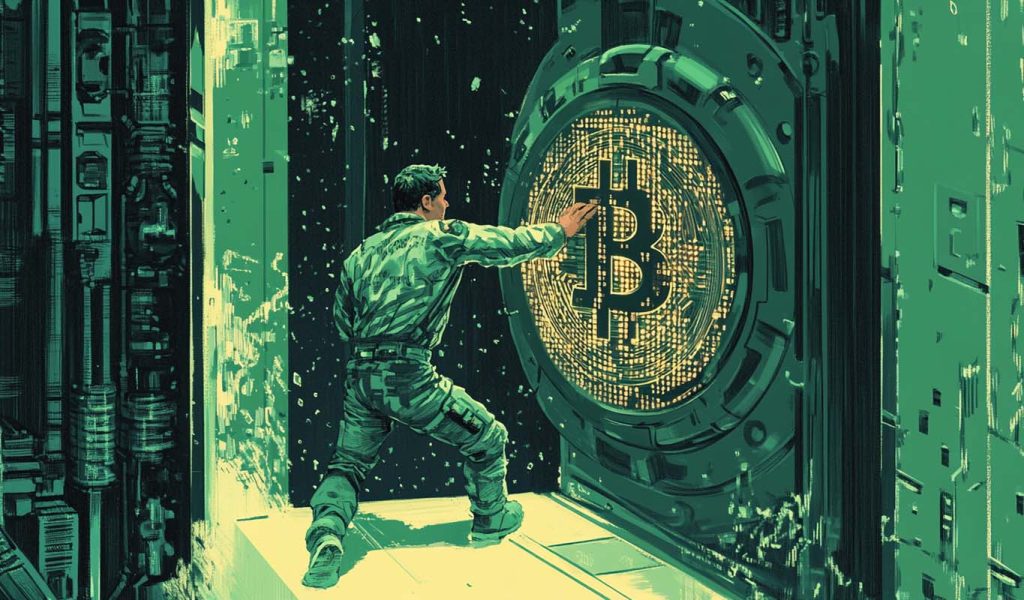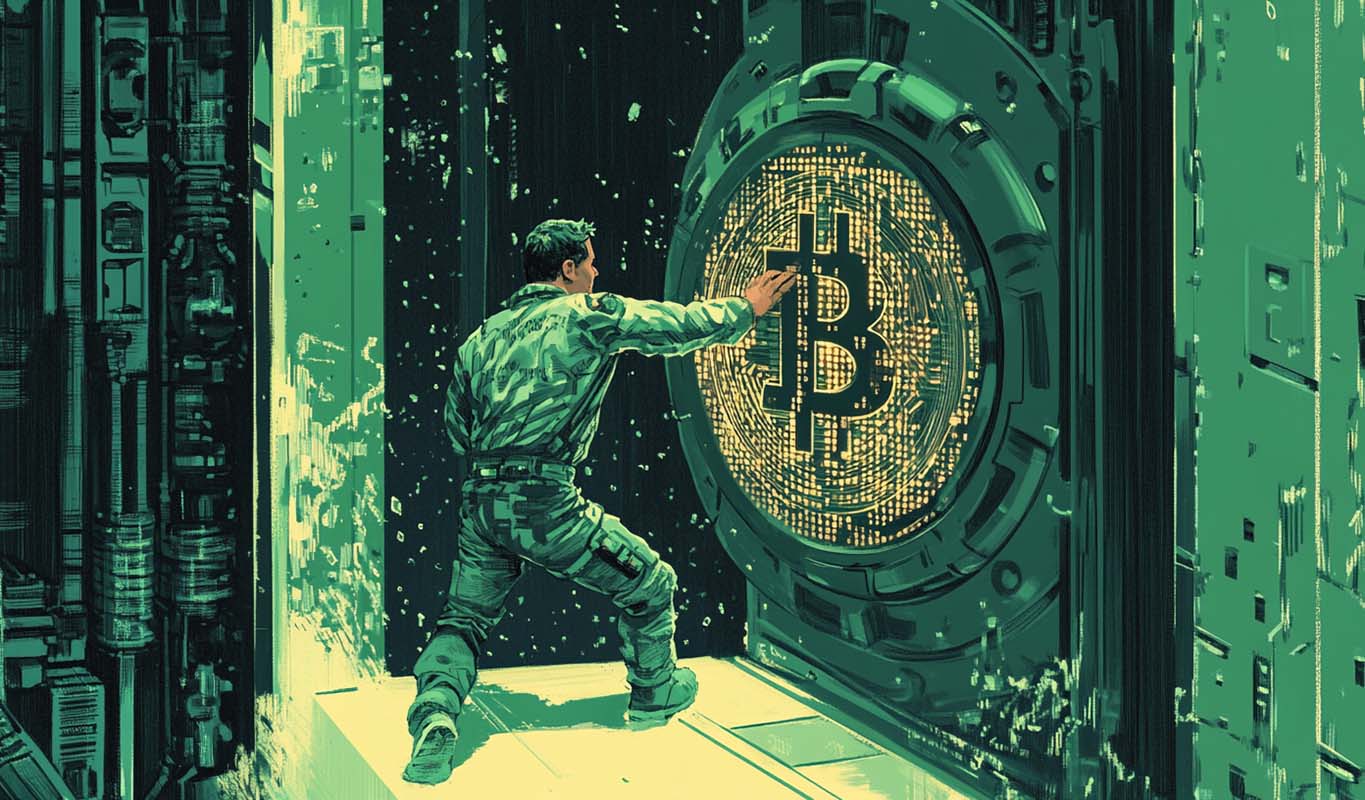
The Kiyosaki Paradox: A Deep Dive into Market Volatility and Investment Strategy
Introduction: The Enigma of Robert Kiyosaki
Robert Kiyosaki, a name synonymous with personal finance education, has once again thrust himself into the spotlight with his latest market predictions. Known for his no-nonsense approach to wealth building, Kiyosaki’s recent warnings about an impending market crash and the bursting of asset bubbles have sparked intense debate. His focus on Bitcoin, gold, and silver—assets he has historically endorsed as safe havens—adds a layer of complexity to his message. This paradoxical stance invites a closer examination of market dynamics, investment strategies, and the very essence of safe-haven assets.
The Recurring Bubble Alarm: A Pattern of Predictions
Kiyosaki’s warnings are not new; they are part of a recurring theme in his financial commentary. He has long been critical of the Federal Reserve’s monetary policies and the fragility of the traditional financial system. His recent predictions, however, have gained traction due to Bitcoin’s meteoric rise to all-time highs. Kiyosaki believes that these highs are unsustainable, driven more by speculative frenzy than fundamental value.
His predictions are rooted in the classic economic theory of boom and bust cycles. According to this theory, periods of rapid growth and speculation inevitably lead to overvaluation and subsequent market crashes. Kiyosaki argues that the current economic climate, characterized by low interest rates and excessive money printing, has created an environment ripe for bubble formation. His warnings serve as a cautionary tale, urging investors to be vigilant and prepared for potential market corrections.
Bitcoin: A Double-Edged Sword
Kiyosaki’s view of Bitcoin is multifaceted. On one hand, he recognizes Bitcoin’s potential as a hedge against inflation and government overreach. He has consistently advocated for investing in Bitcoin as a means to protect wealth from the erosion of fiat currencies. On the other hand, he acknowledges that Bitcoin, like any asset, is susceptible to market volatility and speculative bubbles.
His recent warnings suggest that he believes Bitcoin has entered bubble territory. The rapid price appreciation, fueled by institutional investment and mainstream adoption, has created a sense of exuberance that Kiyosaki finds concerning. He fears that this exuberance will eventually lead to a sharp correction, wiping out significant wealth for those who bought in at the peak. This dual perspective highlights the inherent risks and opportunities associated with Bitcoin and other cryptocurrencies.
The Contrarian Strategy: Buy the Dip
Despite his bubble warnings, Kiyosaki reveals that he plans to buy more Bitcoin if the price crashes. This seemingly contradictory strategy is based on the principle of “buying the dip,” a common tactic among value investors. The idea is to take advantage of market downturns to acquire assets at discounted prices, betting on their long-term recovery.
Kiyosaki’s rationale is that even if Bitcoin experiences a significant correction, its underlying value proposition remains intact. He believes that the long-term trends of inflation, government debt, and technological innovation will continue to support Bitcoin’s growth. Therefore, a crash would present a buying opportunity to accumulate more Bitcoin at a lower price. This strategy underscores Kiyosaki’s belief in the long-term potential of Bitcoin, despite the potential for short-term volatility.
Gold and Silver: The Traditional Safe Havens
Kiyosaki’s warnings extend beyond Bitcoin to include gold and silver, the traditional safe-haven assets. He believes that these precious metals are also vulnerable to a market crash, albeit perhaps to a lesser extent than Bitcoin. He has often touted silver as the best investment, continuing to call on investors to ditch fiat currencies and acquire real assets.
His rationale for including gold and silver in his portfolio is based on their historical role as stores of value during times of economic uncertainty. Unlike fiat currencies, which can be printed at will by central banks, gold and silver have a limited supply and intrinsic value. This makes them attractive to investors seeking to protect their wealth from inflation and currency devaluation. Kiyosaki’s advocacy for these assets reflects his broader philosophy of diversifying investments to mitigate risk.
The Critics’ Counterpoint: A Different Perspective
Kiyosaki’s views are not without their critics. Many crypto analysts argue that Bitcoin’s recent price surge is not a bubble, but rather a reflection of its growing adoption and institutional acceptance. They point to the increasing number of companies adding Bitcoin to their balance sheets, the launch of Bitcoin ETFs, and the growing regulatory clarity surrounding cryptocurrencies as evidence of its long-term potential.
These analysts argue that Bitcoin is still in its early stages of development and that its price is likely to continue to rise as it becomes more widely adopted. They dismiss Kiyosaki’s bubble warnings as overly pessimistic and argue that investors should focus on the long-term fundamentals of Bitcoin rather than short-term price fluctuations. This counterpoint highlights the diverse opinions within the investment community and the need for investors to conduct thorough research before making decisions.
Deciphering the Message: A Nuanced Approach
So, what is the takeaway from Kiyosaki’s warnings and buying plans? It is a nuanced message that combines caution with optimism. He advises investors to be aware of the risks of a potential market crash and to avoid getting caught up in speculative bubbles. However, he also encourages them to take advantage of market downturns to acquire valuable assets at discounted prices.
Ultimately, Kiyosaki’s message is about financial literacy and responsible investing. He urges investors to do their own research, understand the risks involved, and make informed decisions based on their own financial goals and risk tolerance. His warnings about bubbles and crashes serve as a reminder that markets are cyclical and that periods of exuberance are often followed by periods of correction. This balanced approach emphasizes the importance of being prepared, informed, and strategic in one’s investment decisions.
Conclusion: Navigating Uncertainty with Wisdom
Robert Kiyosaki’s pronouncements on market bubbles and Bitcoin have undoubtedly stirred controversy. His warnings serve as a potent reminder that even assets perceived as safe havens are not immune to market volatility. However, his intention to “buy the dip” reveals a deeper strategy—a belief in the long-term potential of Bitcoin and other assets despite the potential for short-term pain. This paradox—warning of a crash while preparing to buy—encapsulates the inherent uncertainty of the market and the need for a balanced approach that combines caution with strategic opportunism.
Whether his predictions prove accurate remains to be seen, but his message serves as a valuable lesson for investors: be prepared, be informed, and be ready to act when opportunity knocks, even amidst the sound of crashing markets. In a world of financial uncertainty, Kiyosaki’s insights offer a roadmap for navigating the complexities of modern investing with wisdom and foresight.





